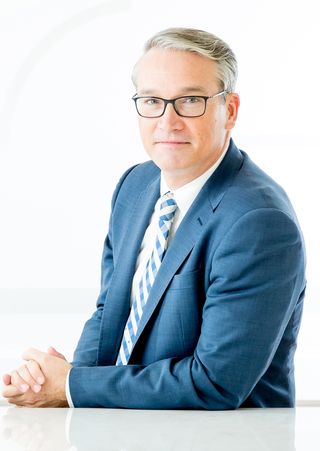“I think Ronald Reagan changed the trajectory of America, in a way that Richard Nixon did not, and in a way that Bill Clinton did not,” Barack Obama remarked in one of the most revealing moments of the 2008 presidential primaries. “He put us on a fundamentally different path because the country was ready for it.”
During his Christmas holiday three years later, in 2010, Obama read one of Lou Cannon’s five biographies of Reagan. Shortly afterwards, Time magazine superimposed a photo of the Republican hero with his arm around the Democratic incumbent. The cover headline: “Why Obama ♥ Reagan”. The sub-heading: “No, the two never actually met, but we think they would’ve had a lot to talk about.”
It’s no wonder the “Gipper” is a role model for President Obama. Both energised their parties and attracted new voters. Both are thought of as ideologically-driven conviction politicians who would bring much needed change at a time of domestic and international crisis. Both are seen as transformational presidents.
There is, of course, a crucial difference. For Obama, the “transformation” he has had in mind is to undo the Reagan revolution with a burst of government expansion and left-liberal governance.
In recent months, several prominent conservatives — Charles Krauthammer; Patrick Buchanan; Mark Steyn; the Wall Street Journal editorial page, whose board member Mary Kissel contributes to this issue of American Review — have recognised that Obama may be fulfilling his purpose.
Recall that in four years he has pushed the largest spending bill in US history, a national healthcare program, major financial reform, and the first income tax increase in nearly two decades. Add to this his administration’s plans for sweeping reforms to education, energy, and firearms, and it is clear that, in American terms, Obama’s agenda is amounting to the most radical ideological change in generations.
Meanwhile, his Republican opponents are in political disarray. But as the veteran political journalist John B. Judis points out, even a liberal Democratic president will struggle to transform the political landscape in Washington, notwithstanding the nation’s liberal trajectory. For the President faces not only a determined and uncompromising opposition but also institutional roadblocks to progressive reform.
Our regular columnist Anatol Lieven suggests that Republicans run the risk of disintegrating into a regional party of the South or a rump party of marginalised angry white men. Whatever the merits of his argument, it is certainly true Obama’s re-election demonstrated that the demographic transformation of the nation has occurred more quickly than expected. That means as the proportion of minorities (Latinos, Asians, and blacks) increases past 30 per cent of the electorate, the white share of the national vote will continue to decline. Last year, minorities voted for the Democrats four to one.
Republicans are catching the significance of the rapid demographic changes. In a move that received hardly any media attention in Australia in December, South Carolina Governor Nikki Haley chose Tim Scott to fill the Palmetto State Senate seat vacated by Jim DeMint. Here was a conservative Republican governor, who is the daughter of immigrants from India, appointing a Tea Partier who will become the only sitting
African American senator in this Congress. Meanwhile, two front runners for the Republican presidential nomination in 2016 are minorities: Bobby Jindal (the Indian-American Governor of Louisiana) and Marco Rubio (the Cuban-American senator from Florida).
As Republicans try to make sense of last November’s defeat, they need to find a way of resonating with Latinos, America’s fastest-growing demographic group, on immigration policy. But they may still remain on the political back foot because the Democratic coalition that re-elected Obama is solidly progressive on not just border protection but taxes and entitlements, among other hot-button issues. And despite the fact that Obama has attracted the ire of the Left over his failure to close the Guantanamo detention camp and push an emissions trading scheme, he is nonetheless presiding over liberal changes across the nation while he increases the size and scope of the regulatory state.
As recently as 2008, liberal candidate Obama ran to the right of conservative vice-president Dick Cheney on the issue of gay marriage. Last year, he changed his mind and his U-turn did not hurt his political prospects one jot. In November, voters adopted a same-sex marriage initiative in as many as four states. This was after 32 prior defeats for the issue at the ballot box.
Moreover, the so-called Millennials — those aged between 18 and 29 — are far more progressive on drugs, guns, abortion, and gay rights than their parents. They also take a more dovish view on foreign policy. According to a Chicago Council on Global Affairs survey last year, a majority want America to “stay out” of world affairs.
To the extent that such attitudes prevail, they may contradict the idea that America is The Right Nation, as the title of a 2004 award-winning book by John Micklethwait and Adrian Wooldridge has it.
The liberal decades of FDR, Truman, JFK, and LBJ, when Democrats won seven out of nine presidential elections, recast the shape of American politics. Yet in the period following Vietnam, and especially Ronald Reagan’s ascent to power in 1980, liberalism lost its way. Republicans defeated Democrats in landslide presidential elections. Liberalism stood tottering on the brink of historical irrelevance.
Today, liberalism is resurgent and a Democratic president is unashamedly attempting to transform the ideological landscape. The President’s inaugural address is further proof that he intends to move the nation in a more liberal direction. What the historian Arthur Schlesinger Jr called “the cycles of American history” may be moving towards the Democrats.





